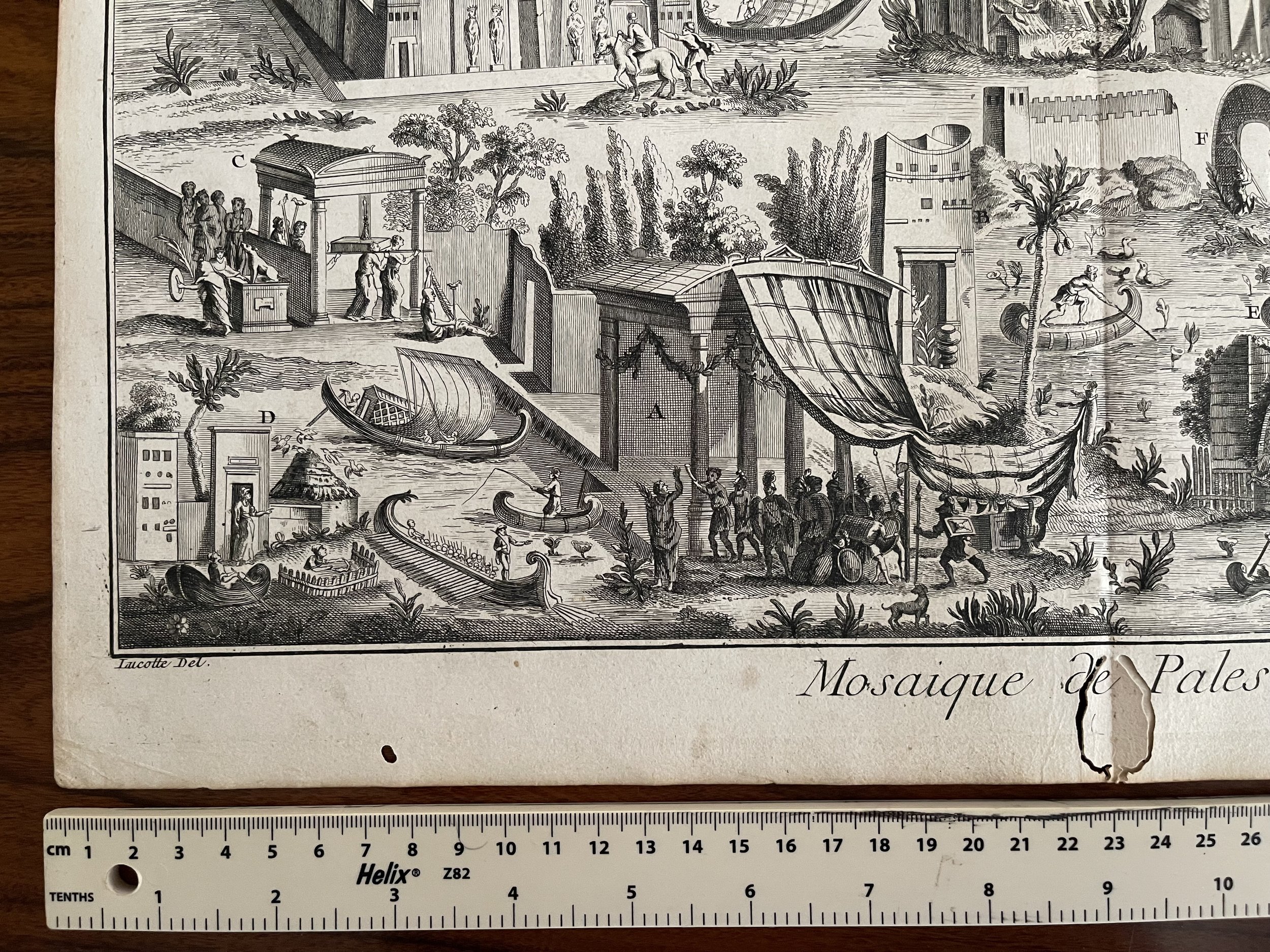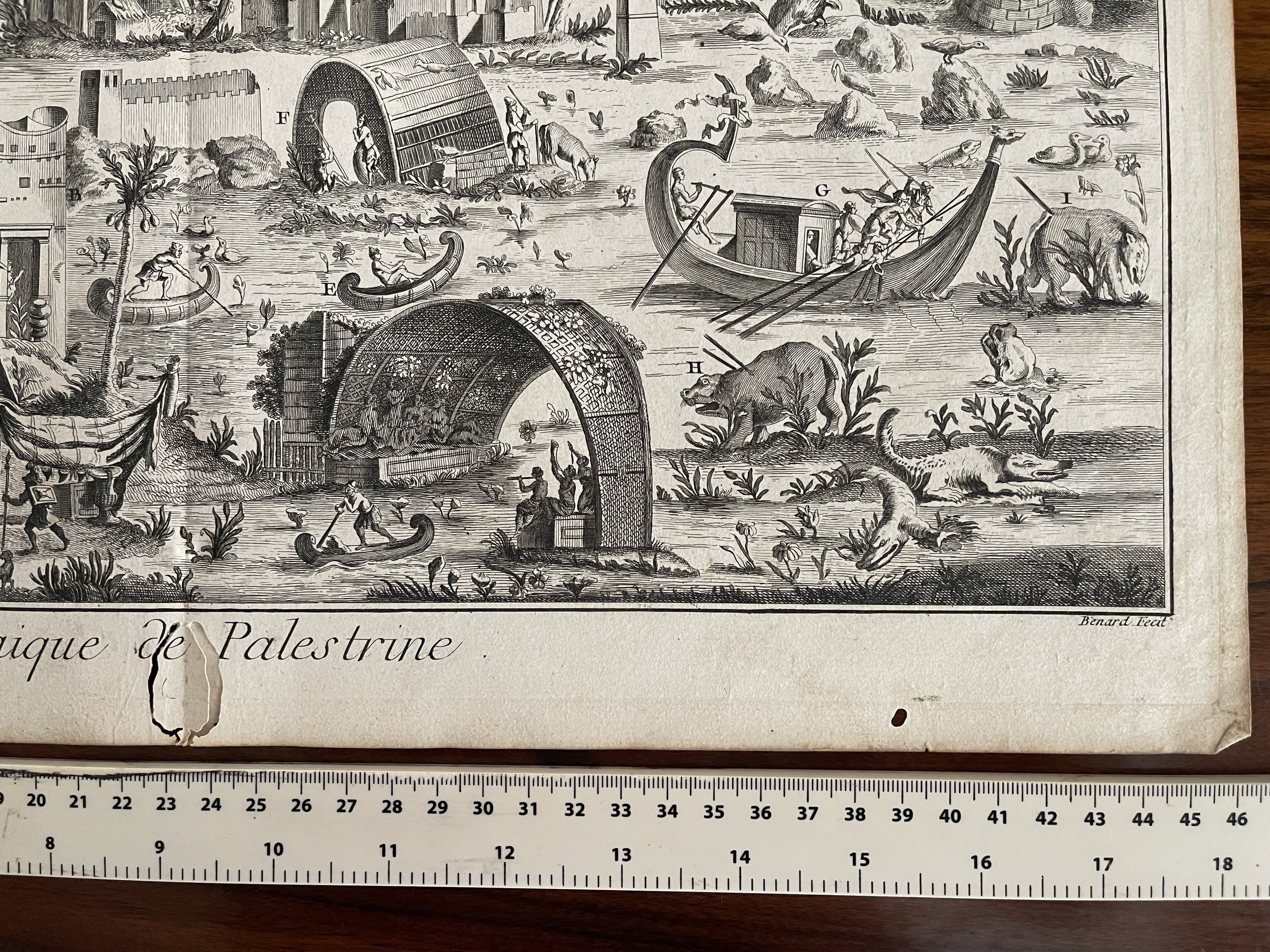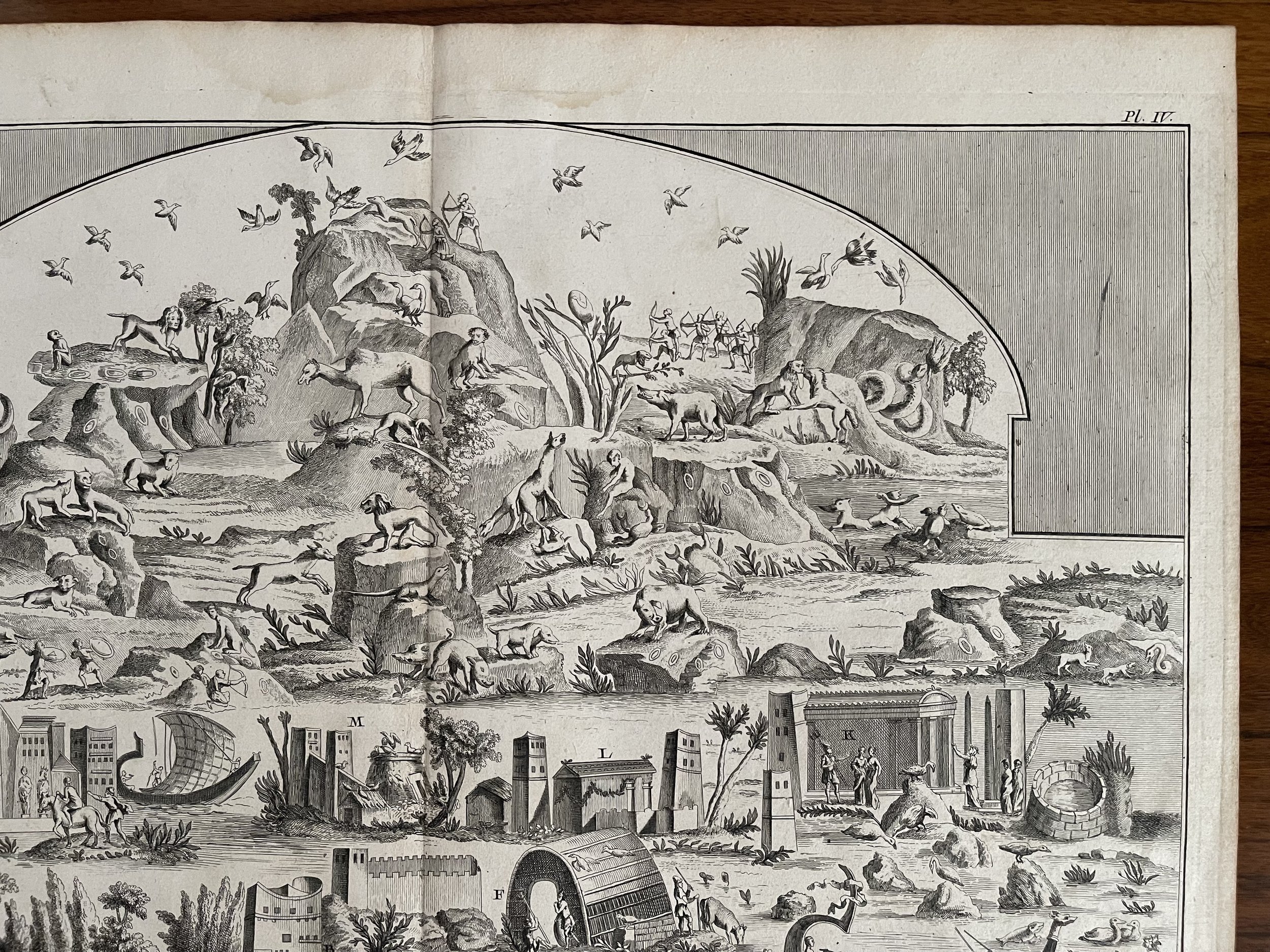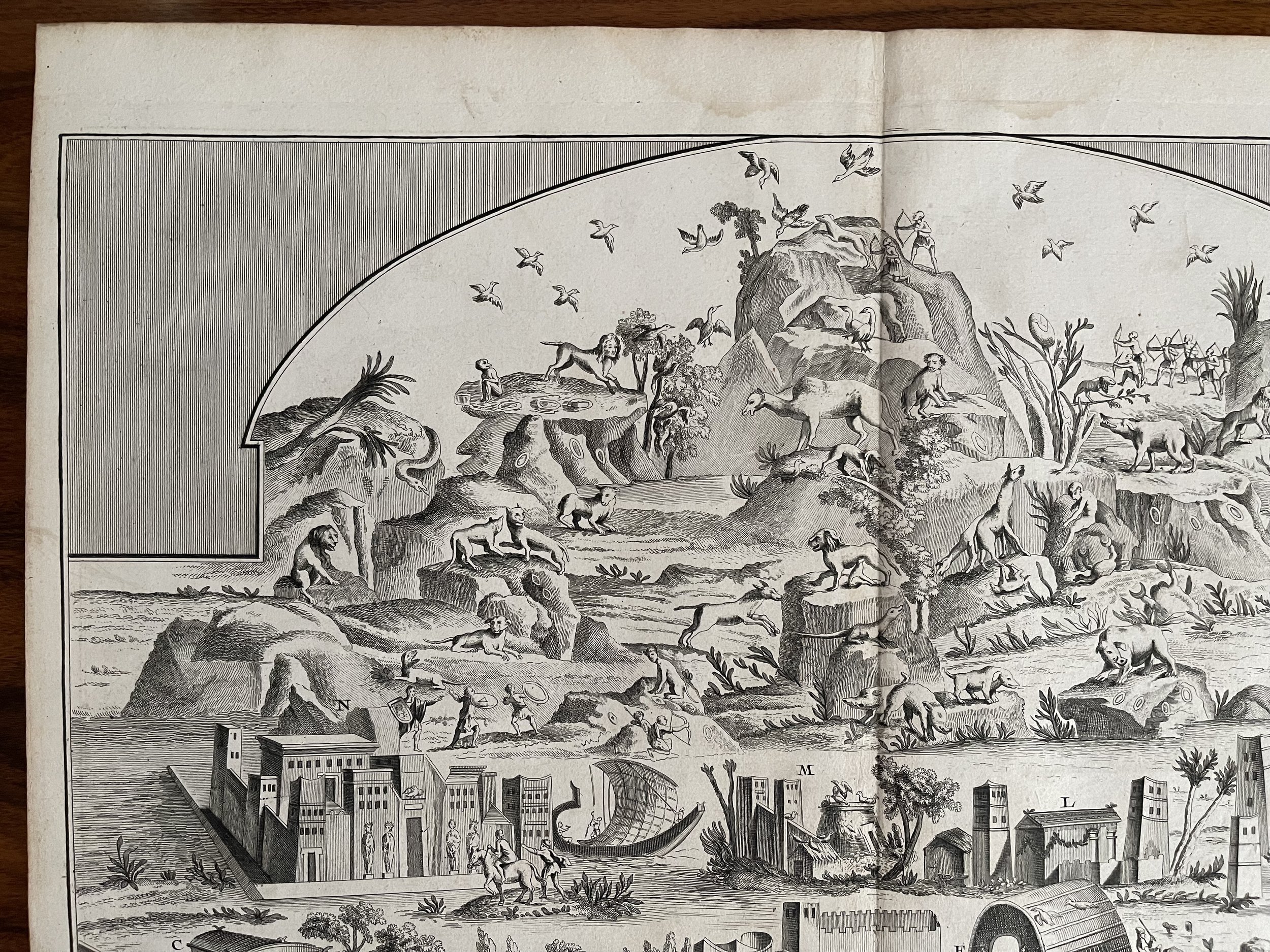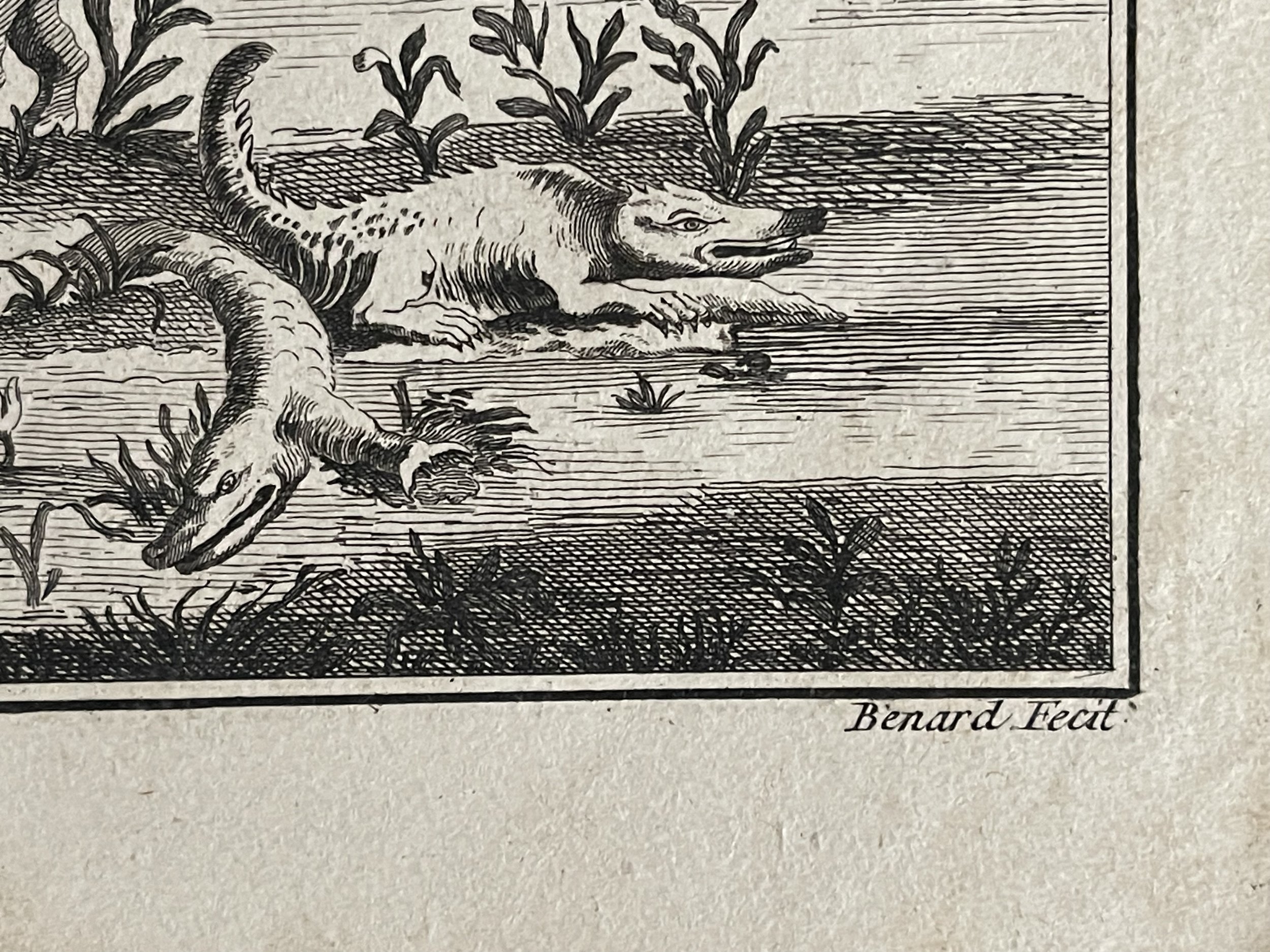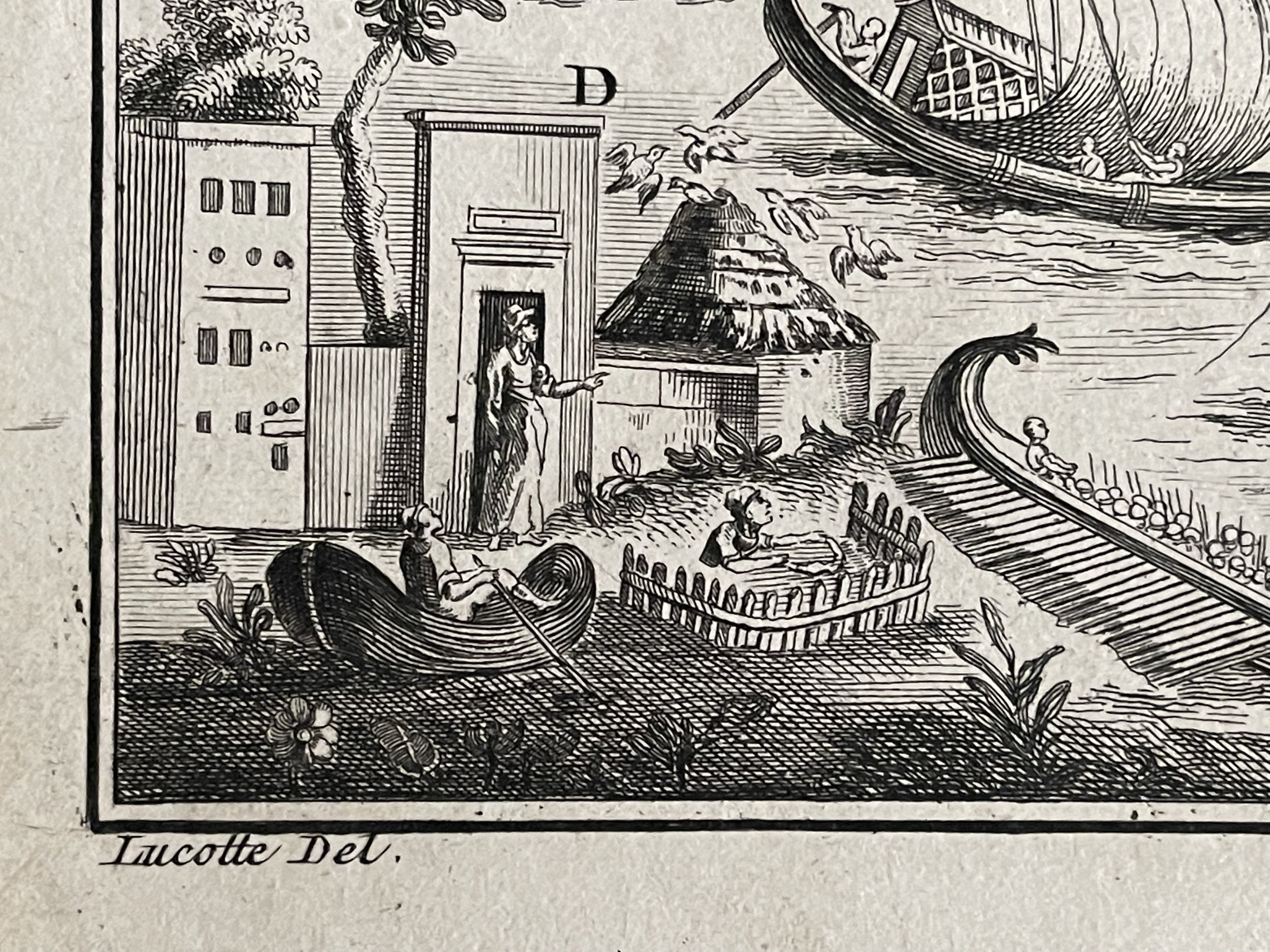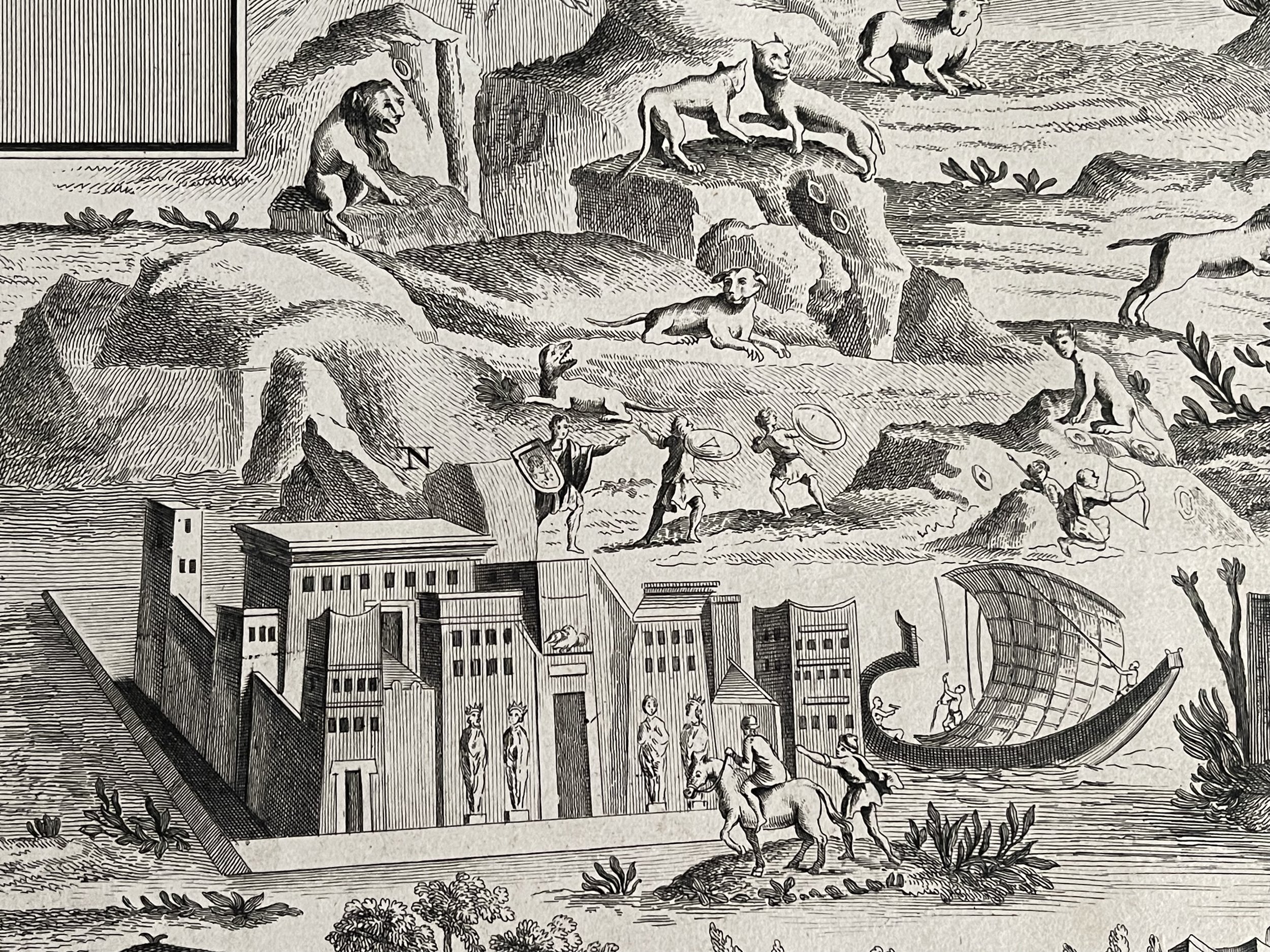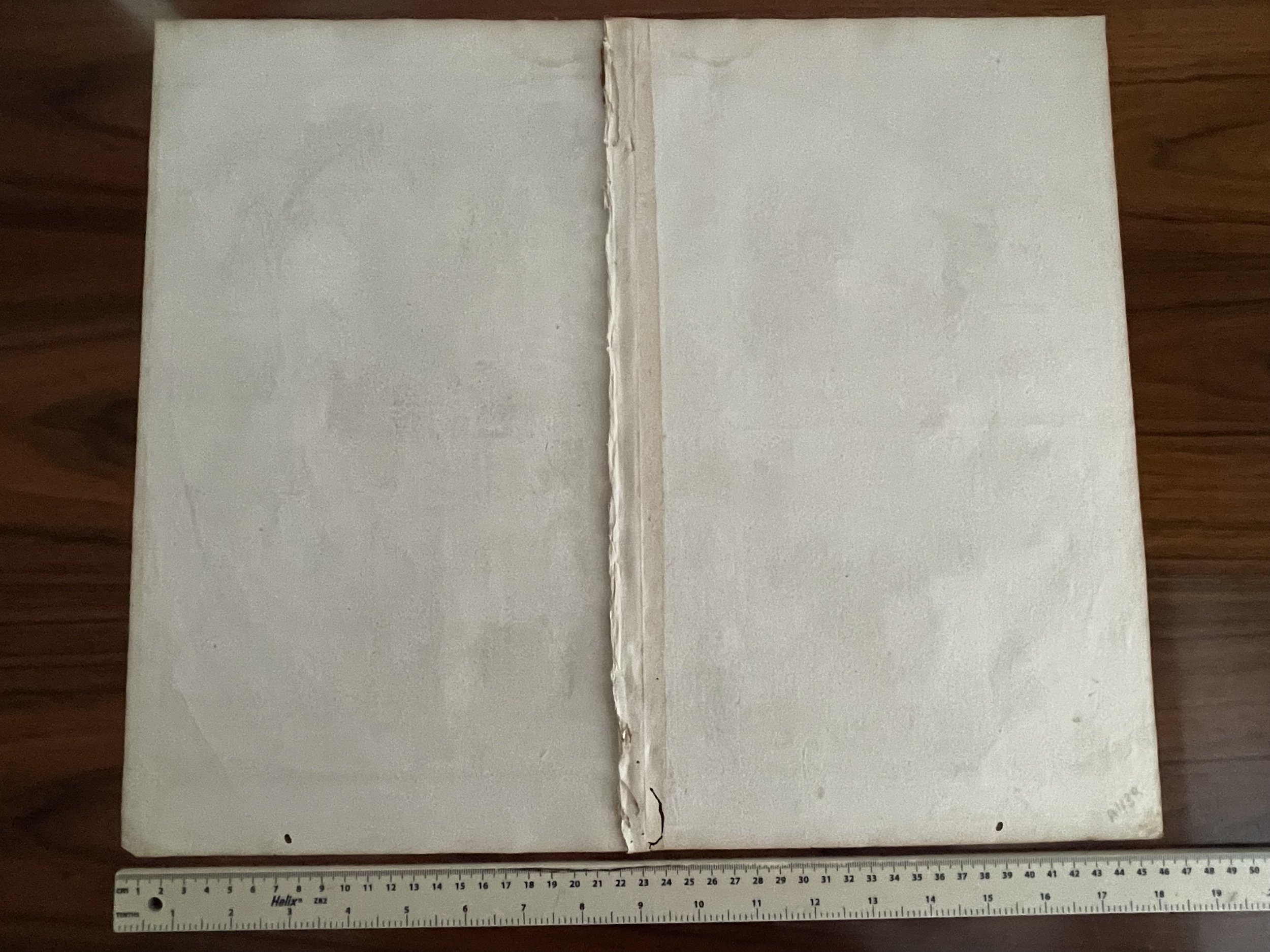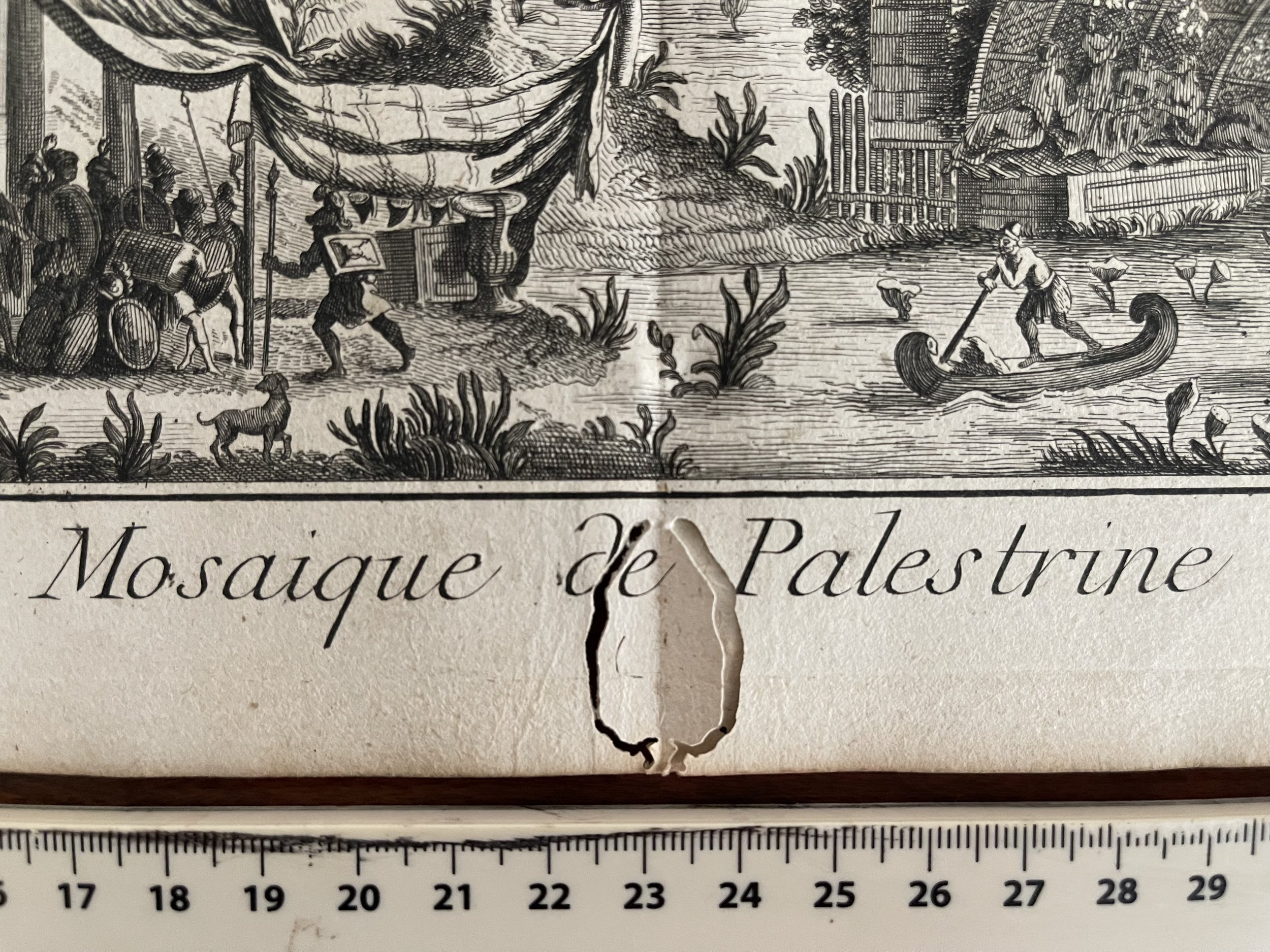Palestine - Palestrina Mosaic - "Mosaics." The Encyclopedia of Diderot & d'Alembert - Dennis Diderot / Jaques Renaud Benard
Mosaic of the Nile (Mosaic of Palestrina). Copper engraving, after a drawing by P.S. Bartoli. Jaques Renaud Benard engraver. Plate from the Encyclopedie, ou Dictionnire Raisonné des Sciences, des Arts et des Métiers, published 1751-80
In Pietro Sante (or Santi) Bartoli, Anne Claude Philippe de Thubières, Count of Caylus, Pierre-Jean Mariette, Abbot Jean-Jacques Barthélemy, Collection of ancient paintings found in Rome, faithfully imitated for colors and line according to the colored drawings by Pietro Sante Bartoli; explanations by P. J. Mariette and the Count of Caylus, Paris, 1757. Connected with the “Explanation of the Mosaic of Palestrine” by Abbot Barthélemy, Paris, 1760.
The Palestrina Mosaic or Nile mosaic of Palestrina is a late Hellenistic floor mosaic depicting the Nile in its passage from the Blue Nile to the Mediterranean. The mosaic was part of a Classical sanctuary-grotto in Palestrina, a town east of Ancient Rome, in central Italy. It has a width of 5.85 metres and a height of 4.31 metres and provides a glimpse into the Roman fascination with ancient Egyptian exoticism in the 1st century BC, both as an early manifestation of the role of Egypt in the Roman imaginatio and an example of the genre of "Nilotic landscape", with a long iconographic history in Egypt and the Aegean
Small worm holes visible outside of main engraving in the lower border.
Mosaic of the Nile (Mosaic of Palestrina). Copper engraving, after a drawing by P.S. Bartoli. Jaques Renaud Benard engraver. Plate from the Encyclopedie, ou Dictionnire Raisonné des Sciences, des Arts et des Métiers, published 1751-80
In Pietro Sante (or Santi) Bartoli, Anne Claude Philippe de Thubières, Count of Caylus, Pierre-Jean Mariette, Abbot Jean-Jacques Barthélemy, Collection of ancient paintings found in Rome, faithfully imitated for colors and line according to the colored drawings by Pietro Sante Bartoli; explanations by P. J. Mariette and the Count of Caylus, Paris, 1757. Connected with the “Explanation of the Mosaic of Palestrine” by Abbot Barthélemy, Paris, 1760.
The Palestrina Mosaic or Nile mosaic of Palestrina is a late Hellenistic floor mosaic depicting the Nile in its passage from the Blue Nile to the Mediterranean. The mosaic was part of a Classical sanctuary-grotto in Palestrina, a town east of Ancient Rome, in central Italy. It has a width of 5.85 metres and a height of 4.31 metres and provides a glimpse into the Roman fascination with ancient Egyptian exoticism in the 1st century BC, both as an early manifestation of the role of Egypt in the Roman imaginatio and an example of the genre of "Nilotic landscape", with a long iconographic history in Egypt and the Aegean
Small worm holes visible outside of main engraving in the lower border.
Mosaic of the Nile (Mosaic of Palestrina). Copper engraving, after a drawing by P.S. Bartoli. Jaques Renaud Benard engraver. Plate from the Encyclopedie, ou Dictionnire Raisonné des Sciences, des Arts et des Métiers, published 1751-80
In Pietro Sante (or Santi) Bartoli, Anne Claude Philippe de Thubières, Count of Caylus, Pierre-Jean Mariette, Abbot Jean-Jacques Barthélemy, Collection of ancient paintings found in Rome, faithfully imitated for colors and line according to the colored drawings by Pietro Sante Bartoli; explanations by P. J. Mariette and the Count of Caylus, Paris, 1757. Connected with the “Explanation of the Mosaic of Palestrine” by Abbot Barthélemy, Paris, 1760.
The Palestrina Mosaic or Nile mosaic of Palestrina is a late Hellenistic floor mosaic depicting the Nile in its passage from the Blue Nile to the Mediterranean. The mosaic was part of a Classical sanctuary-grotto in Palestrina, a town east of Ancient Rome, in central Italy. It has a width of 5.85 metres and a height of 4.31 metres and provides a glimpse into the Roman fascination with ancient Egyptian exoticism in the 1st century BC, both as an early manifestation of the role of Egypt in the Roman imaginatio and an example of the genre of "Nilotic landscape", with a long iconographic history in Egypt and the Aegean
Small worm holes visible outside of main engraving in the lower border.
Code : A438
Cartographer : Cartographer / Engraver / Publisher: Dennis Diderot / Jaques Renaud Benard
Date : Publication Place / Date - Paris 1781
Size : Sheet size: 46.5 x 38.5 cm
Availability : Available
Type - Genuine Antique
Grading - B
Tracked postage, in tubular casement. Please contact me for postal quotation outside of the UK.

